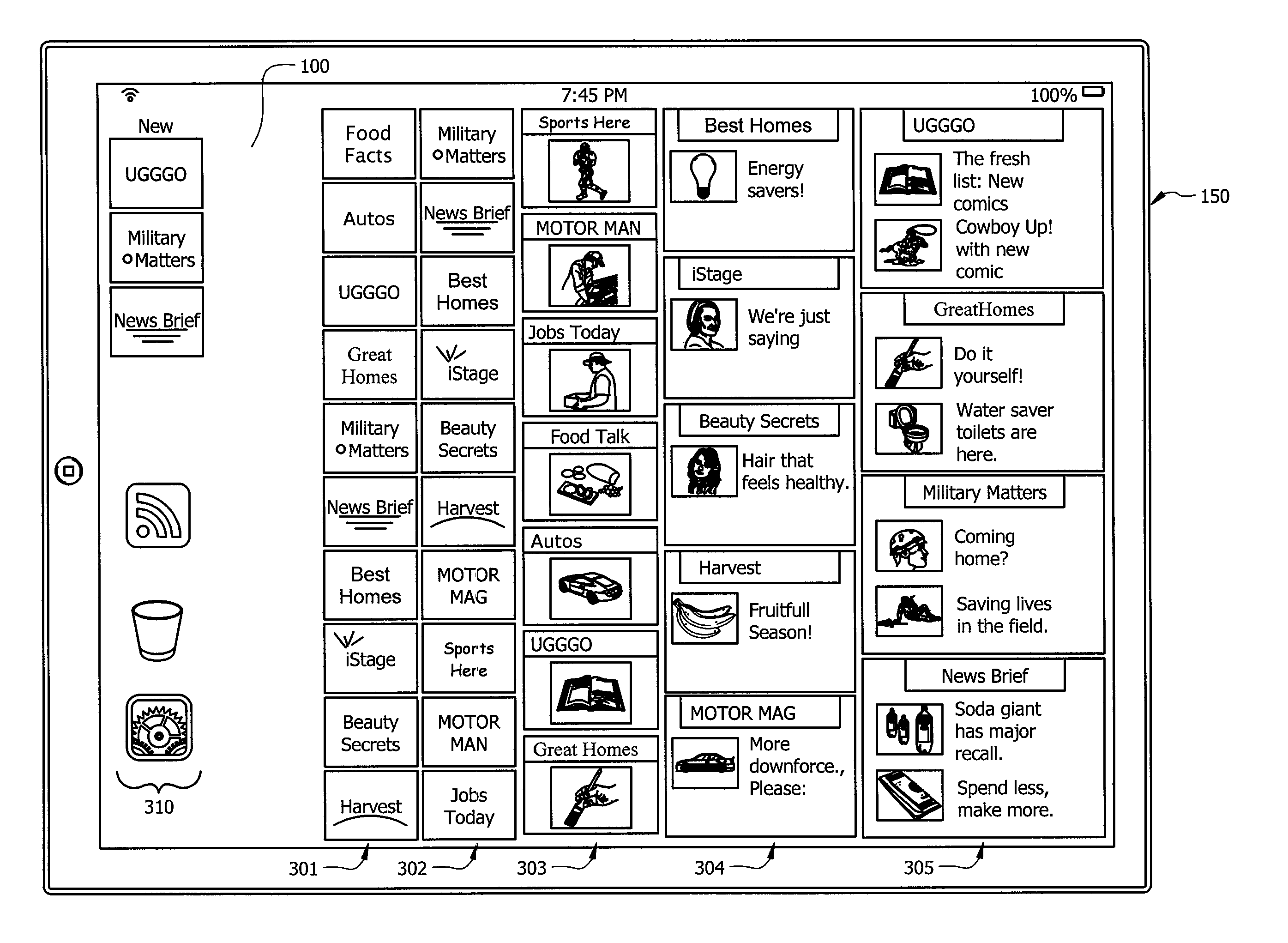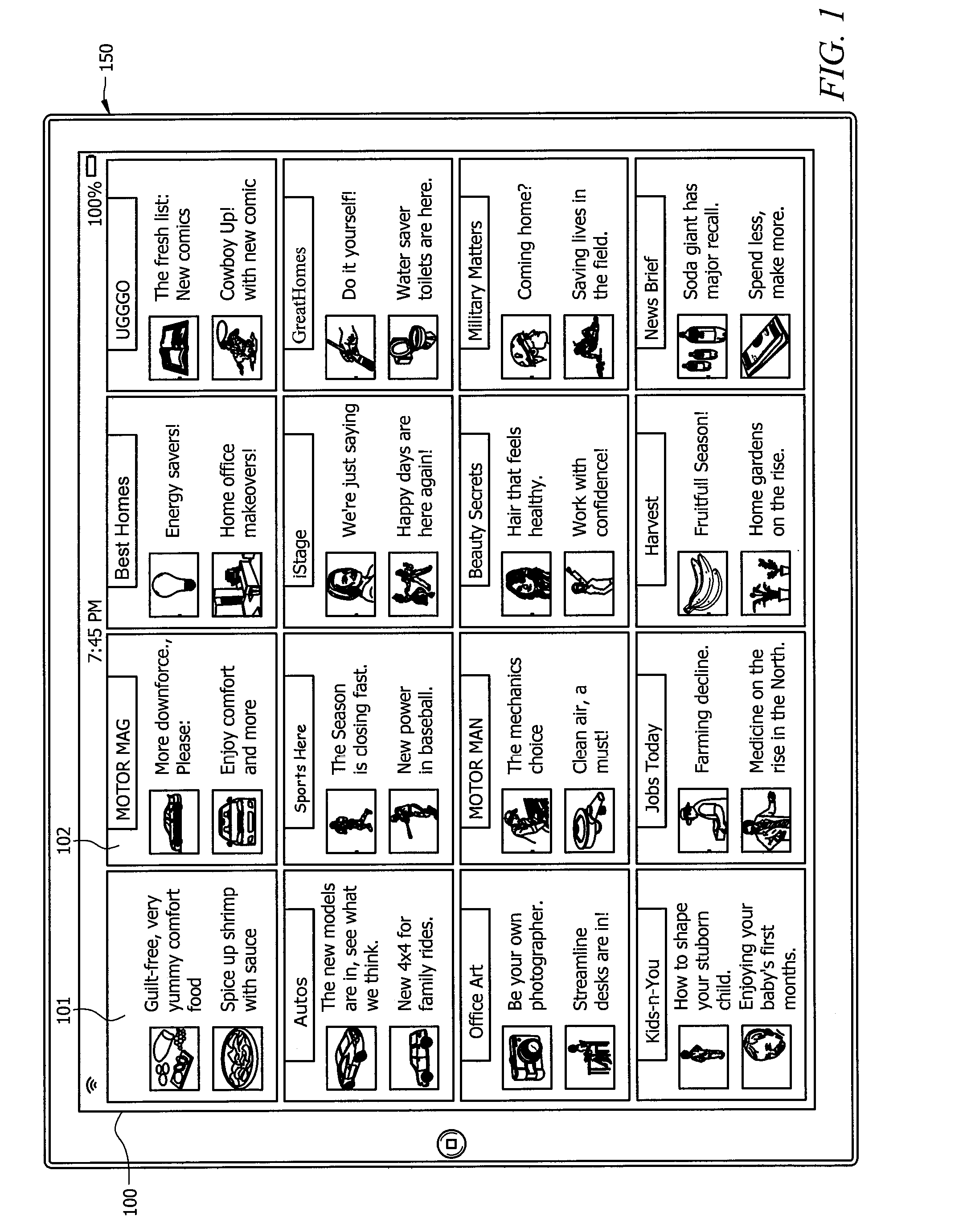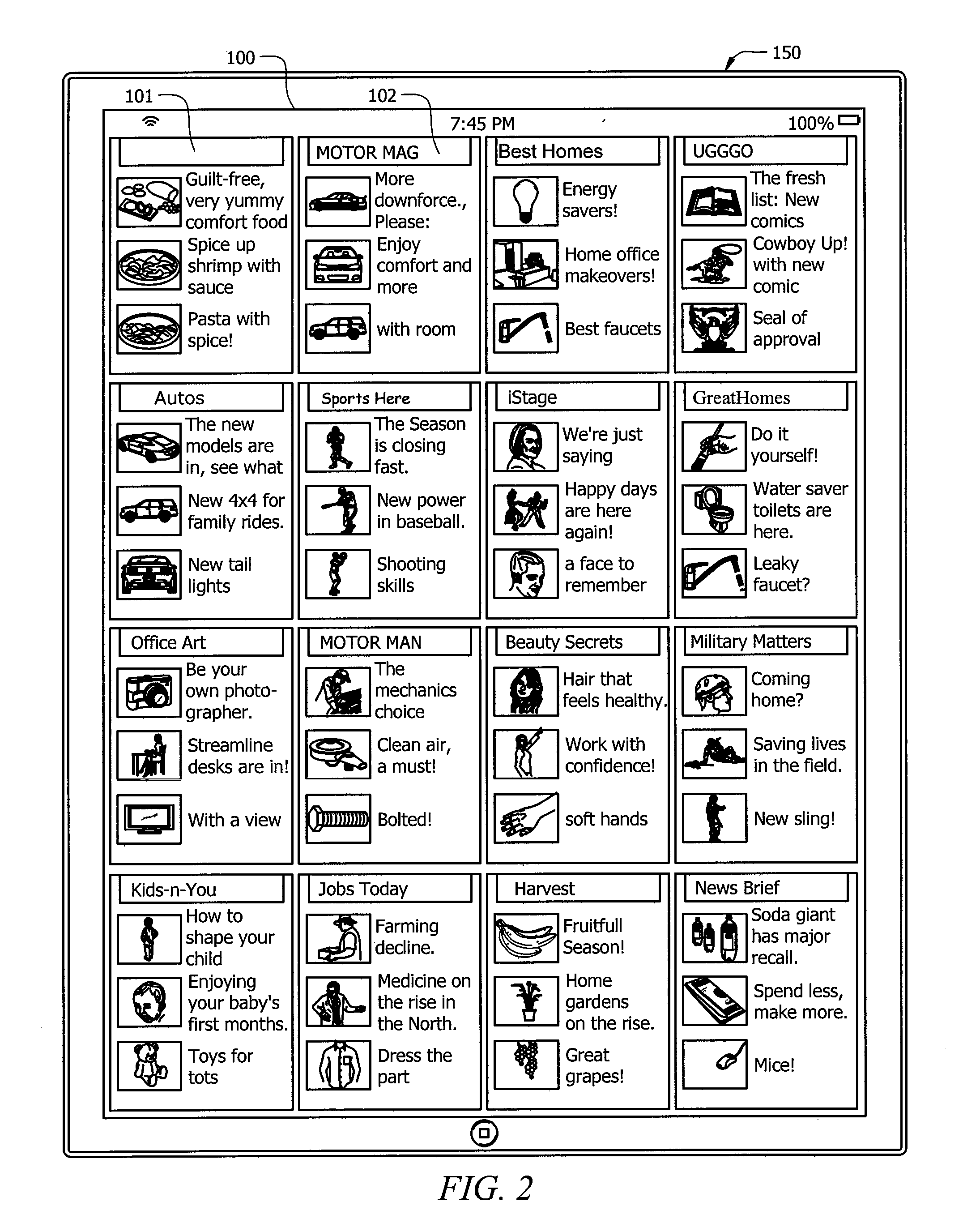Techniques Providing Spatial Consistency of Graphical Elements
a technology of spatial consistency and graphical elements, applied in the field of user interfaces, can solve the problems of large content consumption of handheld devices, annoying use of handheld devices, and limitations of handheld devices
- Summary
- Abstract
- Description
- Claims
- Application Information
AI Technical Summary
Benefits of technology
Problems solved by technology
Method used
Image
Examples
Embodiment Construction
[0019]FIG. 1 is an illustration of exemplary Graphical User Interface (GUI) 100 adapted according to one embodiment of the invention. In one example, GUI 100 is presented upon a display screen of processor-based device 150. Appropriate processor-based devices include but are not limited to laptop computers, desktop computers, tablet computers (e.g., the iPad™, available from Apple, Inc.), and portable devices that have multi-orientation display screens. Some embodiments are especially adapted for use with touchscreen devices, though the scope of embodiments is not so limited, as devices that use computer pointing devices (e.g., a mouse or touchpad) may be adapted for use in some designs as well. In some embodiments, GUI 100 is part of app that is downloaded and run on a processor-based device, while other embodiments may implement GUI 100 as a plug-in for a browser, an interface for a website, and / or the like.
[0020]GUI 100 includes sixteen widgets, such as widgets 101 and 102, arran...
PUM
 Login to View More
Login to View More Abstract
Description
Claims
Application Information
 Login to View More
Login to View More - R&D
- Intellectual Property
- Life Sciences
- Materials
- Tech Scout
- Unparalleled Data Quality
- Higher Quality Content
- 60% Fewer Hallucinations
Browse by: Latest US Patents, China's latest patents, Technical Efficacy Thesaurus, Application Domain, Technology Topic, Popular Technical Reports.
© 2025 PatSnap. All rights reserved.Legal|Privacy policy|Modern Slavery Act Transparency Statement|Sitemap|About US| Contact US: help@patsnap.com



